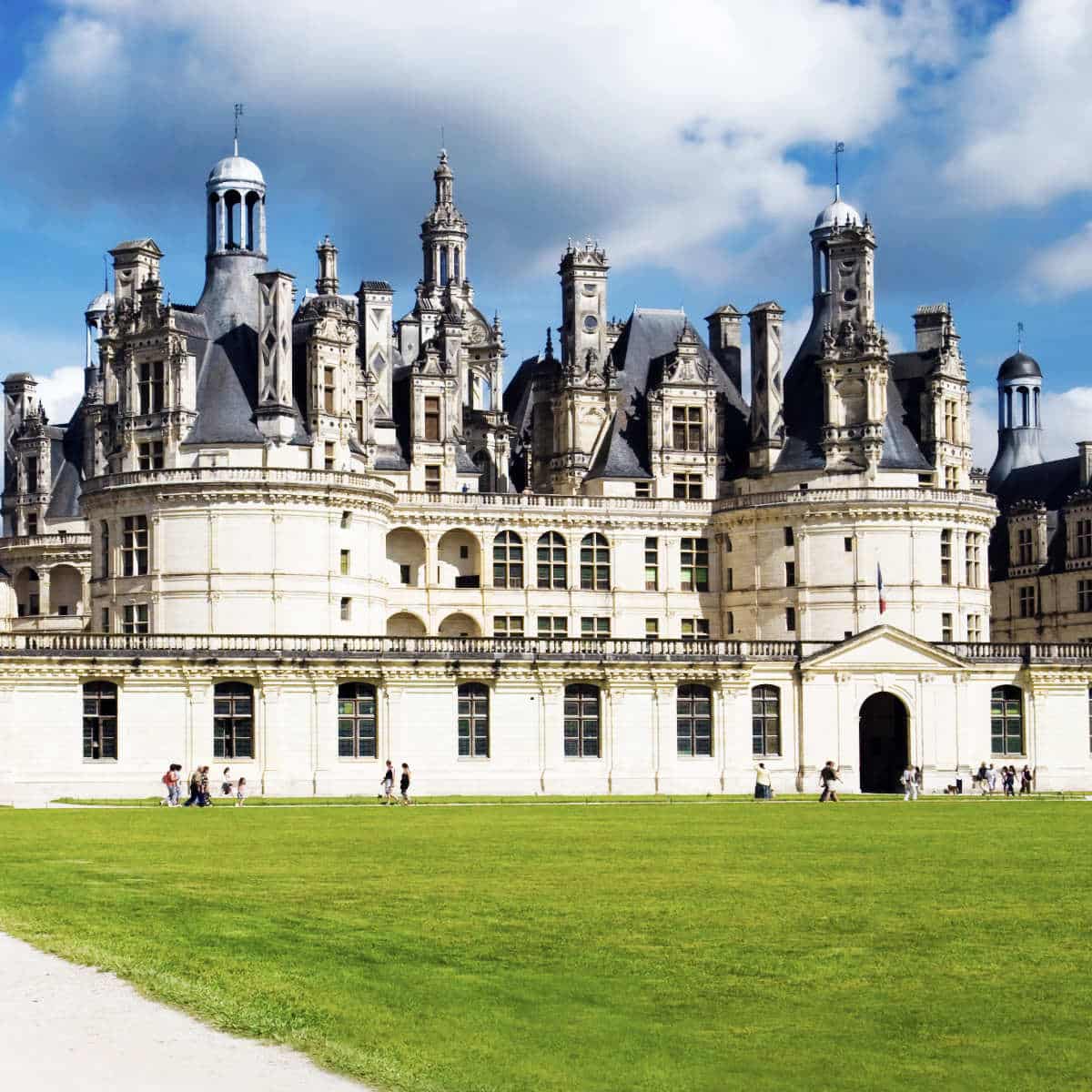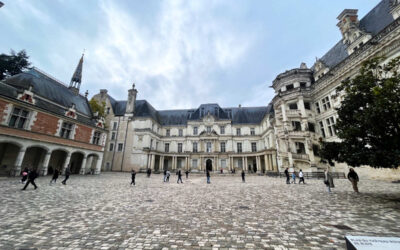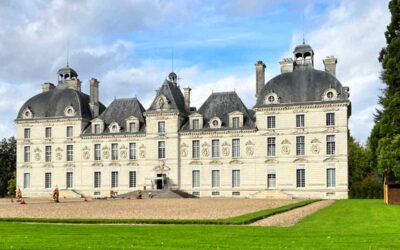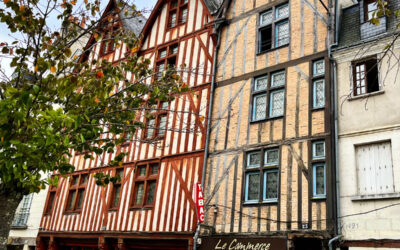The Château de Chambord is a castle in the Loire Valley like no other. For one, it has never been lived in for any significant period of time. This sprawling château is one of the largest in France, and yet has remained rather inhabitable throughout its history.
With construction beginning in the 16th century, the Château de Chambord was not meant to be a royal home, but rather a symbol of the grandeur and French power.
It is a few miles from the Loire river near other famous châteaux in the area like Château de Chenonceau, Château de Blois, Château de Chaumont, and Château de Cheverny, near the cities of Amboise and Blois. It is about 3 hours away from Paris, making it ideal for a day trip from the city.
In appearance, Château de Chambord is not a defensive castle like many earlier châteaux, but rather built to showcase artistic and engineering expertise. It is famous for its grand dual staircase, and the rumor that the great Leonardo da Vinci was involved in its designs.
So let’s explore how the Château de Chambord came to be and what to see inside, shall we? Allons-y!
History
Construction of the royal palace at Château de Chambord began in 1519 under the reign of King François I of France. François had been going for the title of Holy Roman Emperor, but lost to his rival Charles V of Spain and Austria at the Imperial Election in the same year.
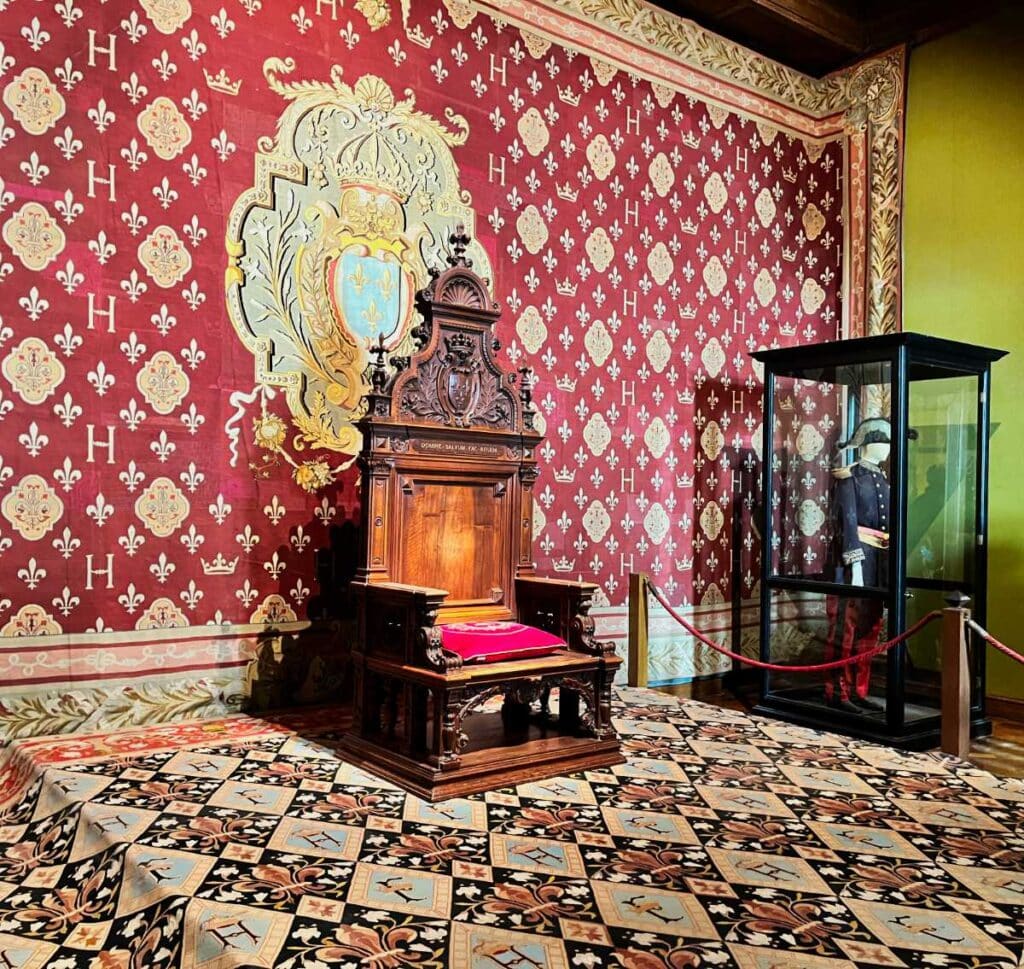
François wanted to show off his power and began substantial works at the Château d’Amboise (where he was born), Château de Blois (his wife Claude’s childhood home), as well as a new château at Chambord. All three castles are within 30 miles (50km) of each other.
There is some controversy as to who was the architect of Chambord, because of similarities between the sketches of the great Italian genius Leonardo da Vinci and parts of the château such as its staircase.
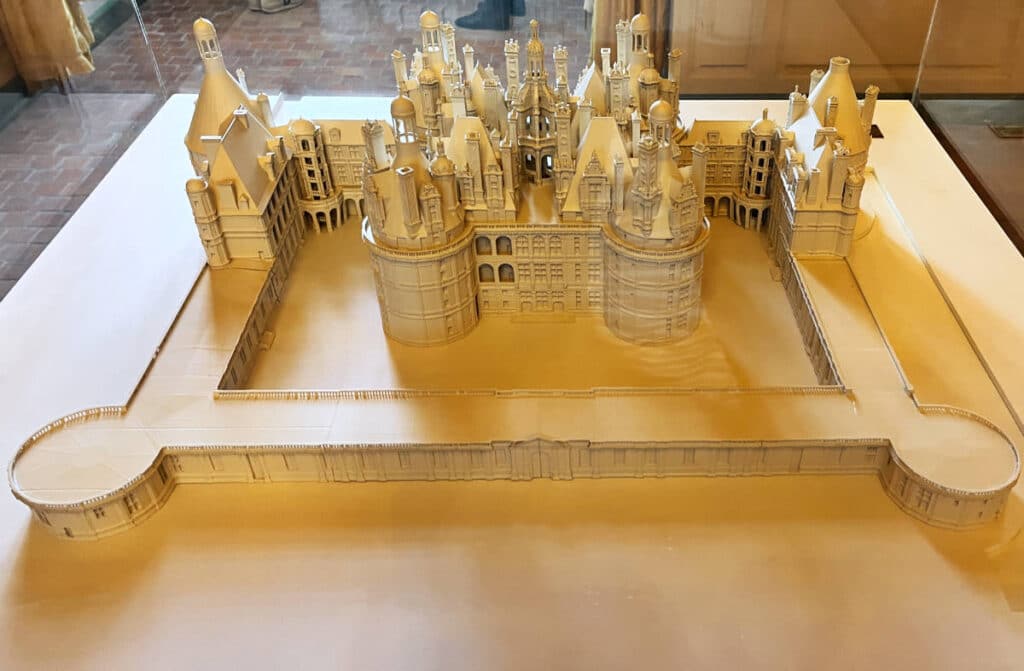
Leonardo da Vinci was living nearby in Amboise (at the Château Clos Lucé) under the protection of the King. However, he died on May 2, 1519, the same year the Château de Chambord began. While he may have contributed some ideas, the overall design is believed to be attributed to another Italian, Domenico da Cortona.
However, the Château de Chambord was never completed under François Ier’s reign, and he only stayed here around 50+ days during hunting parties. In 1539, François did host his old rival Holy Roman Emperor Charles V at Chambord however for one night.
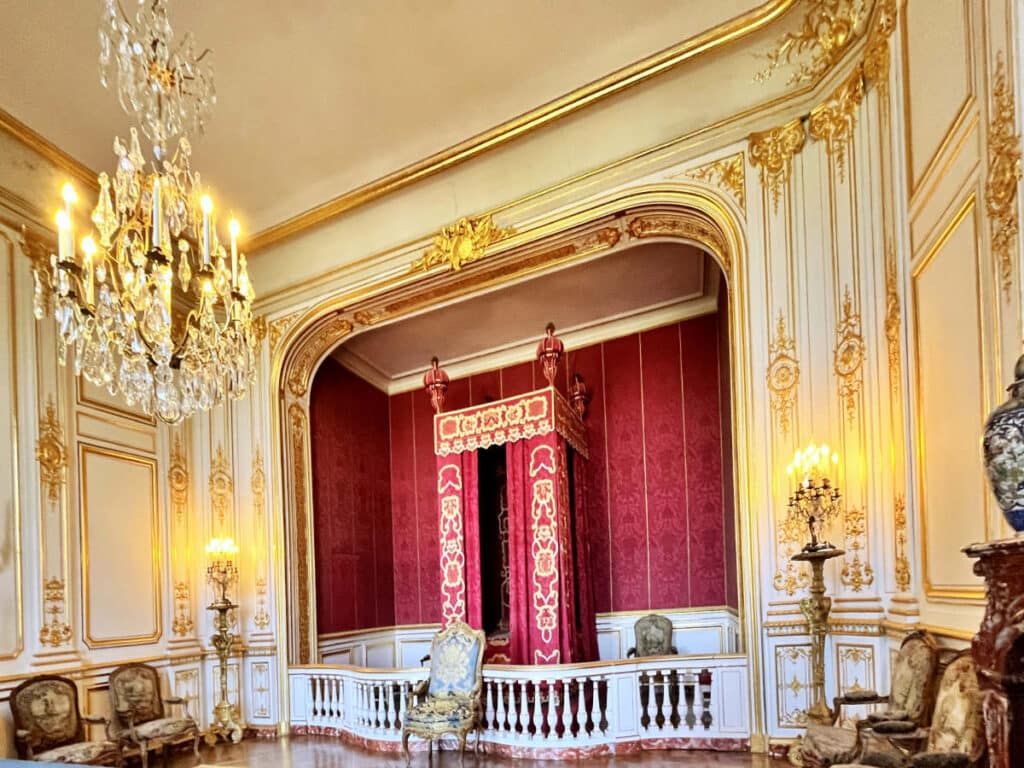
After François I died, the château was largely abandoned with subsequent Kings only making short visits to the château. Work on the château continued off and on.
It would be the Sun King Louis XIV (who also constructed the Palace of Versailles) who would finance and complete the construction of Château de Chambord. He made a few visits to Chambord, with troupes of entertainers and musicians including the great Moliére.
The King who would live here was actually not a French King at all. Louis XV used the castle to house his father-in-law King Stanislas Leszczyński of Poland in exile between 1725 and 1733.
During the 1789 French Revolution much of the Château de Chambord’s interiors and estate was ransacked. The Château remained in rather dire straits until the 20th century when restoration works began in earnest.
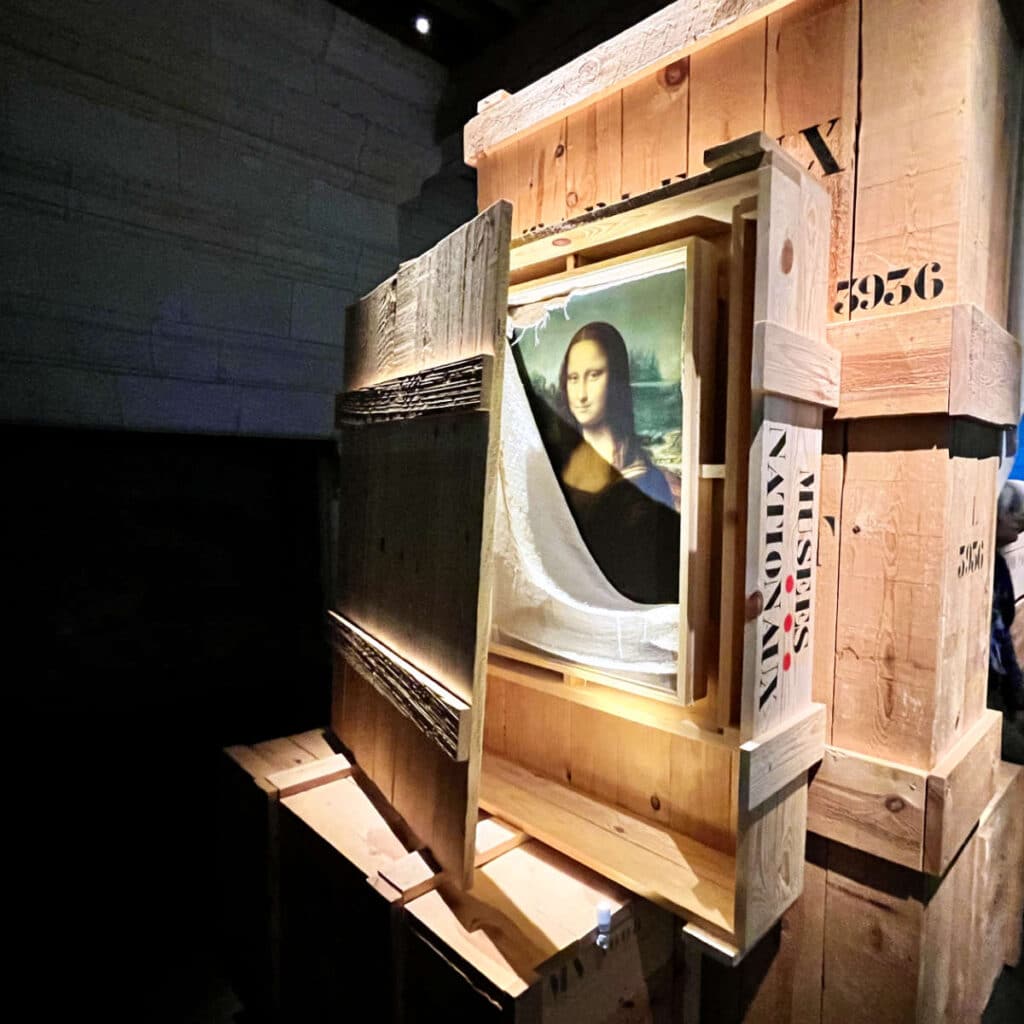
Right before the start of WWII, the Château de Chambord became the center for sorting the treasures of the national museums of Paris which had to be evacuated and protected from the invading German army.
Curators sent paintings and treasures like the Mona Lisa from the Louvre to Chambord for protection. Some items stayed till the end of the war, while others were hidden in discreet locations all across the country. The Château itself narrowly escaped bombing during the war.
After the end of war, restoration works began in earnest and today the Château de Chambord is one of the top tourist attractions in the Loire Valley. The Loire Valley châteaux are officially recognized on the UNESCO world heritage list.
Inside the Château
The Château was designed in a traditional fortress style. There is a central building with a tower on each corner, and an outer protective wall on three sides with large towers along with a partial moat.
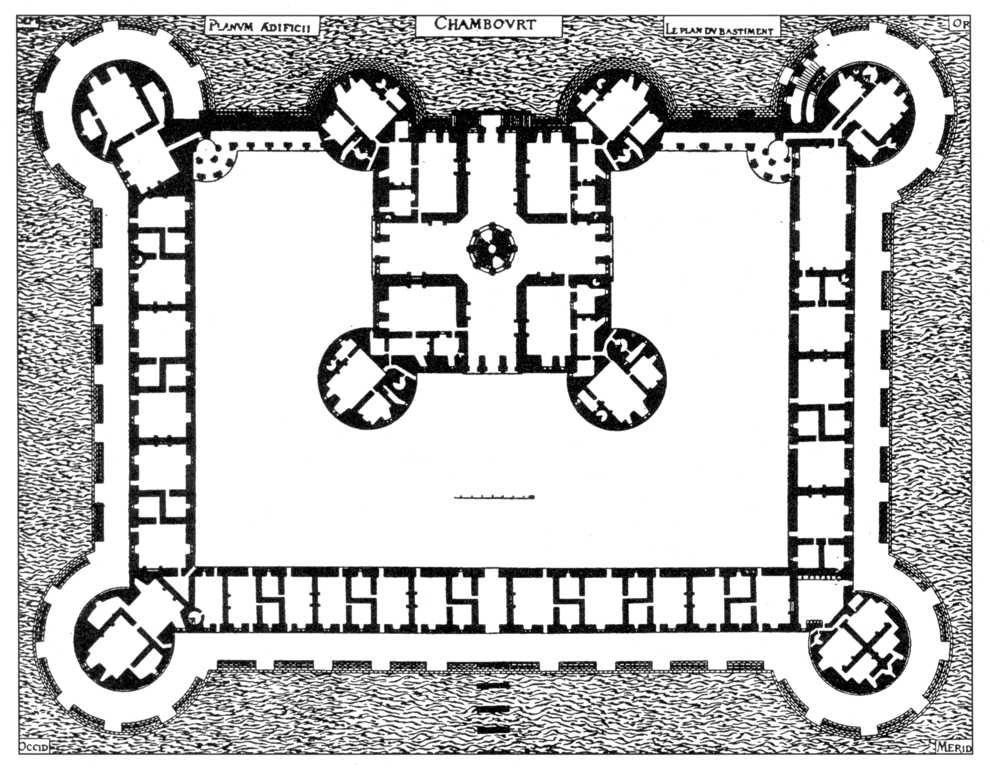
However, the walls, moat, and towers are all decorative and were never meant to withstand invasion.
In the center is the stunning double-spiral staircase which is designed rather like the dual strands of DNA (unknown at the time). It is this feature that hints at Da Vinci’s contribution to Chambord, as he had many sketches of stairs.
The stairs ascent and cross one another, so that though people on opposite stairs may see each other by small loopholes, but only meet when they land on opposite sides of the same floor.
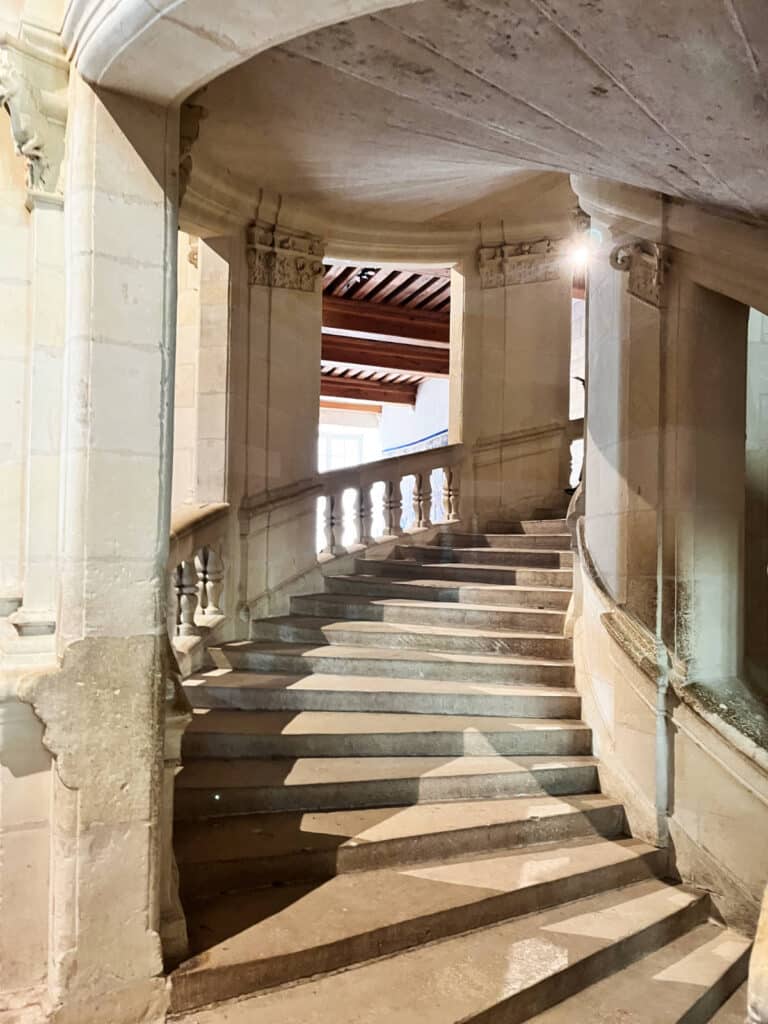
Each of the four corners of the central building almost house identical-sized rooms that were meant to be symmetric.
There are several grand salons and reception rooms inside, along with a small museum showing the history of the castle. There are also several rooms set up as bedrooms using furniture that has been restored from other châteaux.
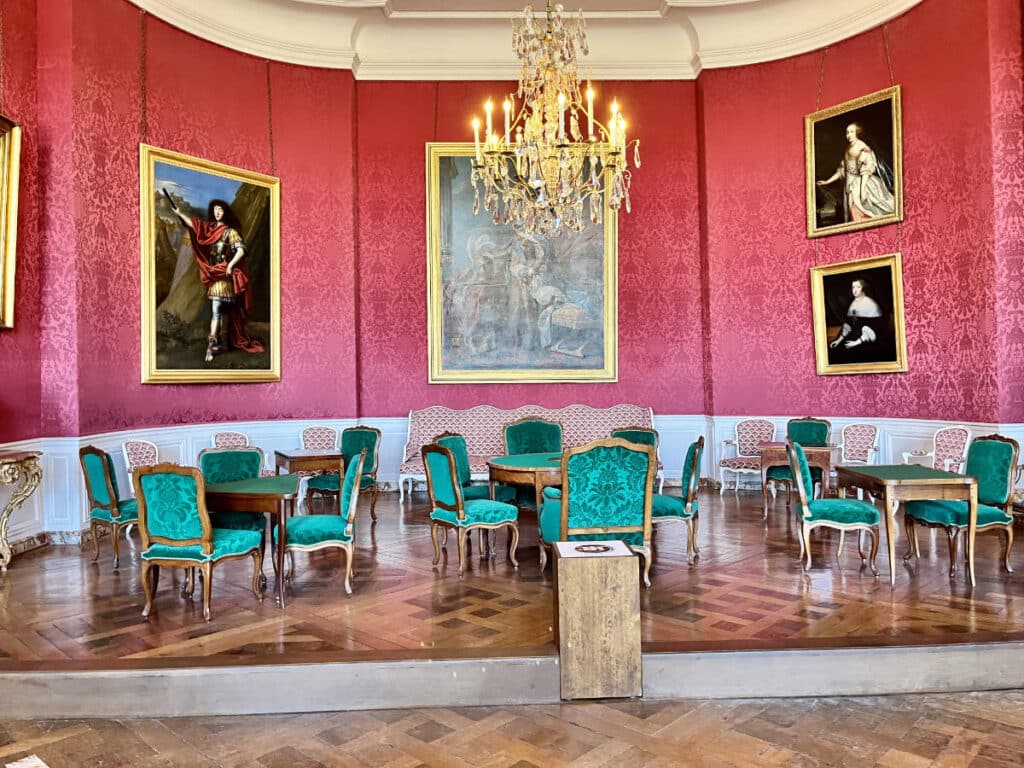
You can also visit the kitchens, chapel, the carriage room and Louis XIV’s theatre. It is a large castle to walk around, and its symmetric design means that there isn’t a straight line that you can walk in, but rather access different parts of the château from the central stair case.
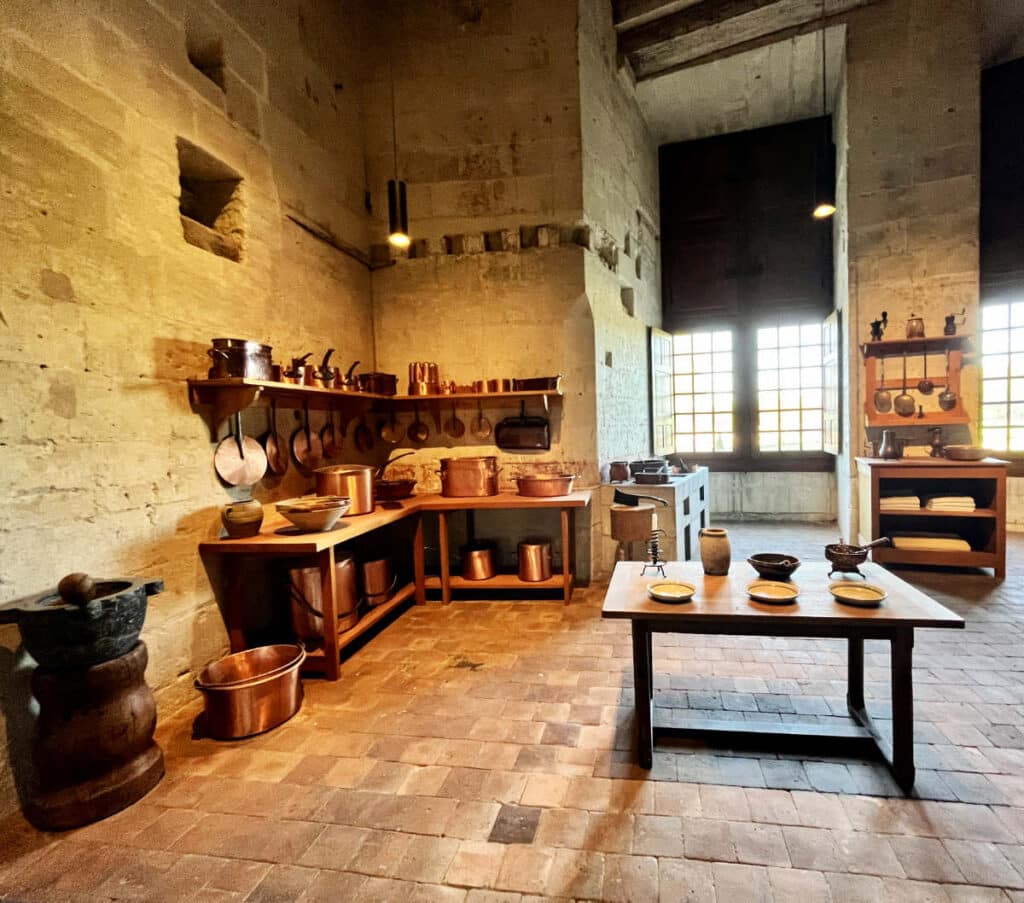
The Rooftop
The large double-spiral staircase also gives access to the roof of Chambord, so that you can see the magnificent sculptures and designs up close.
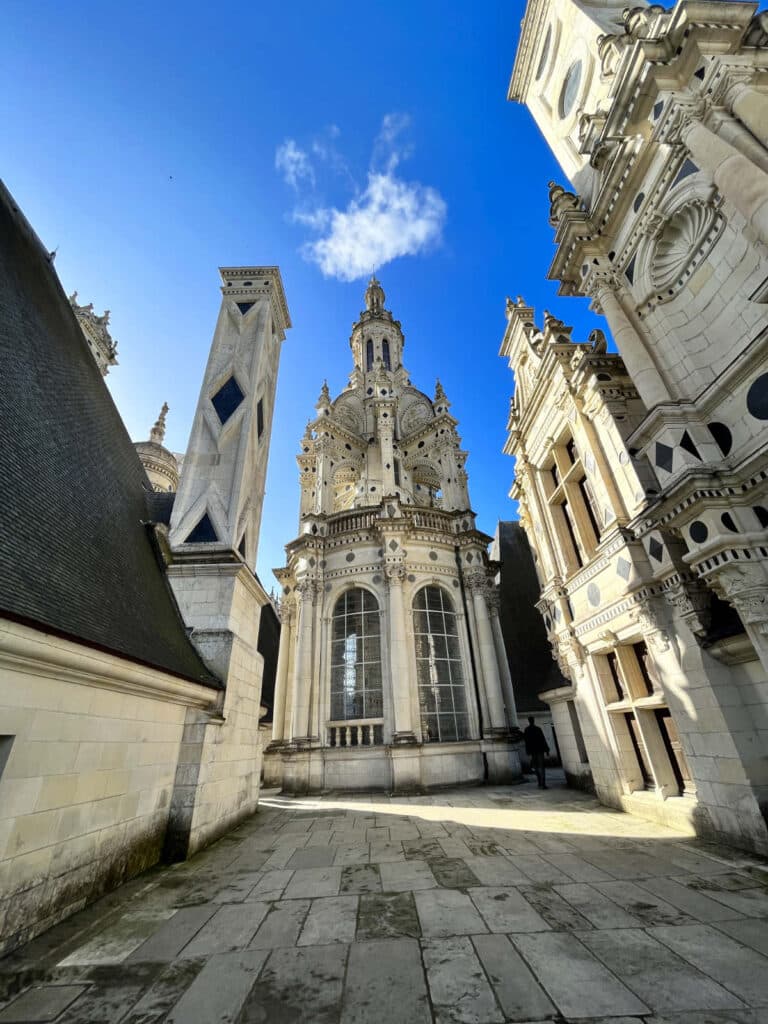
From here, there are beautiful views of the castle grounds all around as well as the forest where the royalty and nobility of the day used to hunt.
The Gardens
The gardens of the Château de Chambord have been restored in the 18th-century French-style of manicured gardens. Their exact layout has been reproduced using old sketches and the information available.
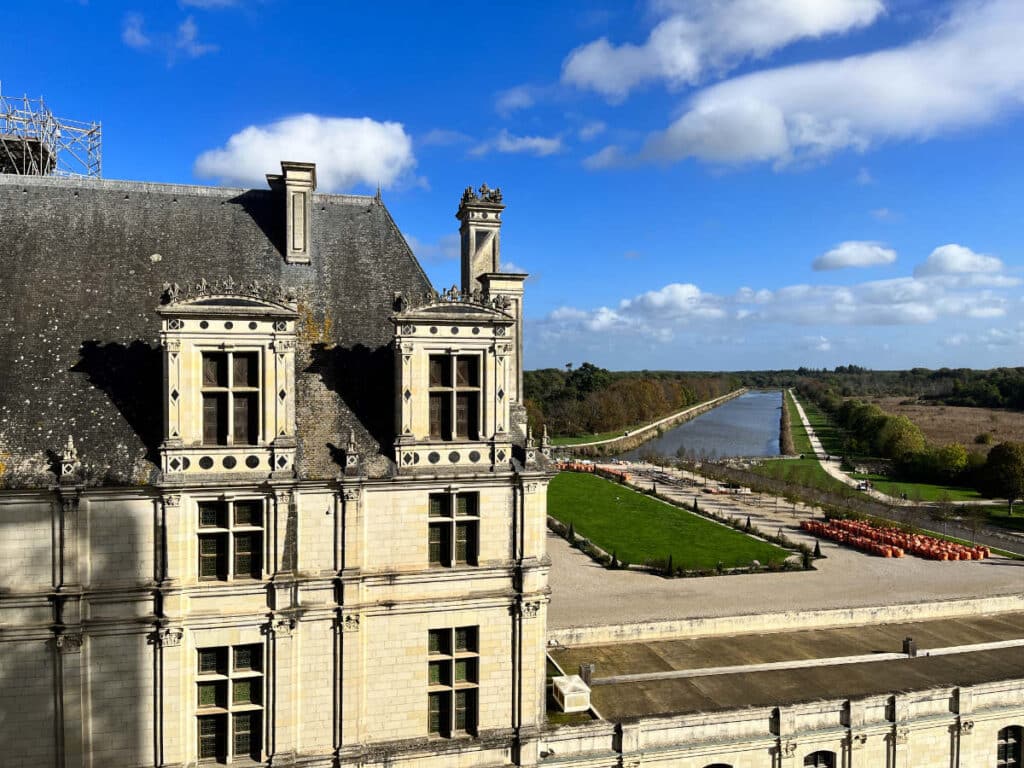
In the gardens there are a couple of cafés if you want to buy lunch, as well as chairs and tables set up for a picnic. The gardens are quite large so put on your walking shoes to enjoy.
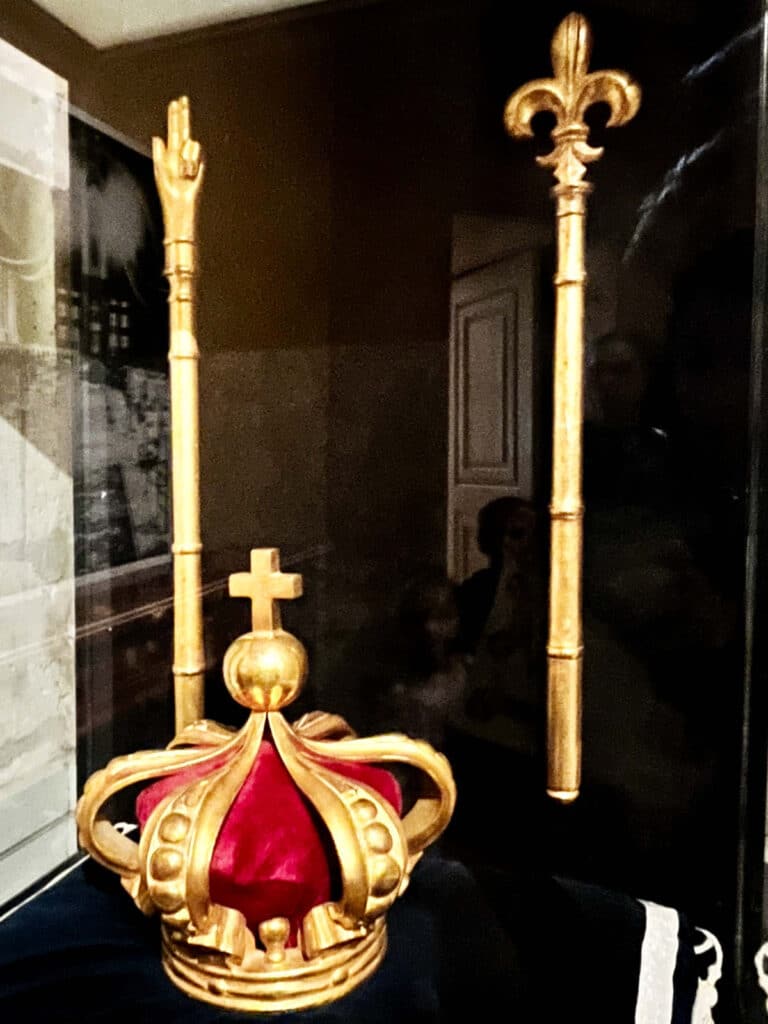
How to get there?
There are also various tour options leaving from Paris, which will have you there and back in style. The Loire is one of the big French wine regions, so certain tours combine wine-tasting and sightseeing. You can see the tour options to Château de Chambord here.
Where to stay?
The Château de Chambord is located about 25 minutes from the city of Blois, where there are several wonderful hotels. You can also choose to stay in Amboise which is a little further away. Some recommended hotels are:
In Blois:
- €€€ – ibis Blois Centre Château
- €€€€ – Hotel Mercure Blois Centre (with pool)
- €€€€€ – Fleur de Loire (on the quai across from the old city center of Blois)
In Amboise:

If you enjoyed that article, you may like to read more about traveling around the Loire Valley. A bientôt!
